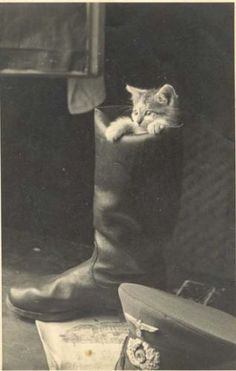
In the 1800s and early 1900s, many New York police station houses–like the Morrisania station–were located in neighborhoods populated by stables or shanties that were overrun by rats. The policemen of this era were not ashamed to admit that it was quite unnerving to see a large rat scampering across their dormitory at night. It was no doubt very reassuring to know that the rural station house cat was on the job.
The Morrisania police station on Washington Avenue at 160th Street was the perfect candidate for a station house cat. Although today we call it the South Bronx, less than 150 years ago this southwestern section of the borough was a sleepy little village surrounded by farms along the Mill Brook (today’s Brook Avenue). Although I’m sure the station house in Morrisania had many mouse catchers over the years, three such felines that made the New York headlines in the 1900s deserve a special tribute.
But first, a quick look at the history of the Morrisania police station.
From Town Hall to Police Station
In 1639, Jonas Bronck, a Swedish captain for the Dutch West India Trading Company, was granted a purchase of land between the Harlem and Aquahung (Bronx) Rivers. Following his death in 1643, the tract passed through the hands of successive Dutch traders until 1664, when a royal patent for Bronck’s land was issued to Samuel Edsall.
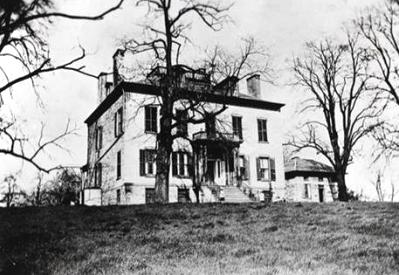
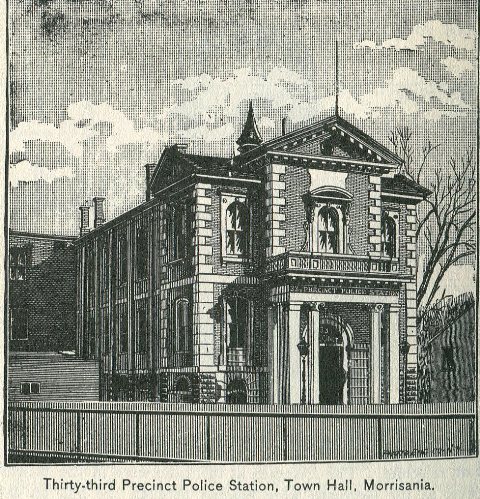
Edsall in turn conveyed the land to Captain Richard Morris and Colonel Lewis Morris. Four years later, Colonel Morris obtained a royal patent to Bronck’s Land and adjacent lands, which afterward became the Manor of Morrisania – a total of 1,900 acres bounded by the Bronx Kill at E. 132nd Street, W. 170th Street, the Harlem River and the East River.
Fast-forward to 1869, when the original Morrisania police station began its life as the first town hall for Morrisania. The two-story stone and brick structure was erected for about $40,000 under Supervisor William Cauldwell, and was designed by architects John Rogers and Edward H. Browne, who both resided in Morrisania.
When the township was formally annexed to New York City in 1874, the building was adapted for a police station. Morrisania was a large precinct patrolled by mounted policemen, and so a wooden stable was erected on the east for the horses of the mounted unit. Later, an annex was built in the rear for a dormitory for the men.
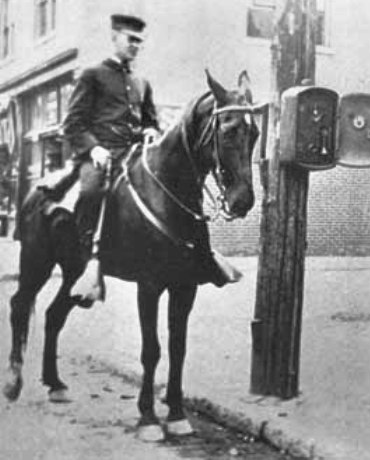
The grounds on the triangular lot were reported to be quite lovely, and featured a flower garden and pastures for the horses. School children often stopped by to watch or feed the horses — a particular favorite was Shiner, a cherry bay horse who was on the job for 20 years.
Directly behind the station were the tracks for the Port Morris branch of the New York and Harlem Railroad.
But as time went by and Morrisania became more populated, the old town hall building was no longer suitable for a police station.
As Police Captain Theron R. Bennett noted in 1885, “The accommodations are wretched, but the place is comfortable.” It would be another 20 years before the town got a new police station.
In May 1904, workers began demolishing the old building in preparation for a new, modern station. During the construction, the department was temporarily housed in an abandoned tool factory that the city owned on Brook Avenue near the site of today’s O’Neill Triangle. Finally, on November 1, 1905, the policemen moved into their new home at 830 Washington Avenue, a Neo-Renaissance style palazzo-like police station designed by Charles Volz.
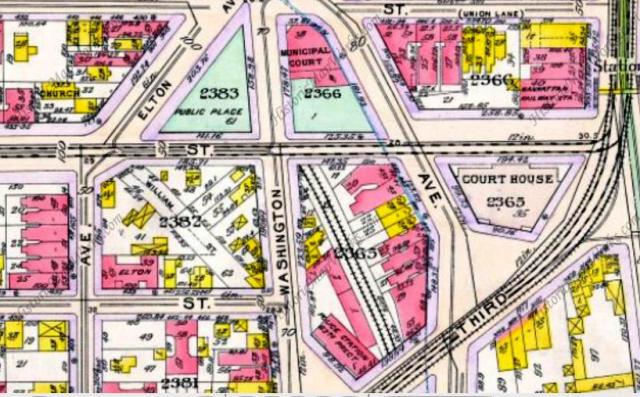
1904: Bill is Arrested for Stealing a Steak
In June 1904, when the Morrisania police were in their temporary quarters in the old tool factory, Bill was the precinct’s official mouse catcher under the command of Sergeant William E. Egan. Every day, Sergeant Egan’s son, Albert, would bring his dinner to the station. On June 29, Albert brought his father a large porterhouse steak that he was looking forward to eating.
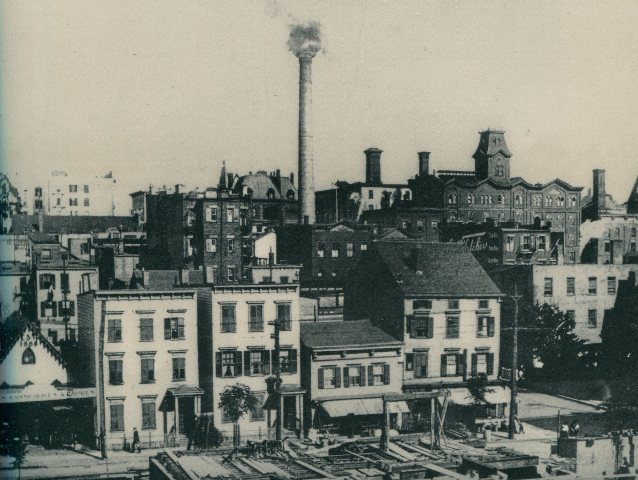
Just as he was about to eat his meal at his desk, another policeman appeared with a prisoner and he was called to assist. As he walked from his desk he heard the dish fall to the floor. Then he saw Bill carry away his prized steak.
This wasn’t the first time Bill had stolen food from Sergeant Egan, but this time he wasn’t going to get away with it. The sergeant told The New York Times that he was “arresting” the cat for larceny, and that Bill would be arraigned later that day by Captain Patrick Byrne.
1911: Pete Goes on a Hunger Strike
In 1911, the Morrisania police had been in the new station house for six years. The population was booming at this point, and one by one the old farms and vacant lots began disappearing as new housing was constructed to meet the heavy demand. It was during this era that a beautiful white cat named Pete ruled the roost as the chief mouser of Morrisania.
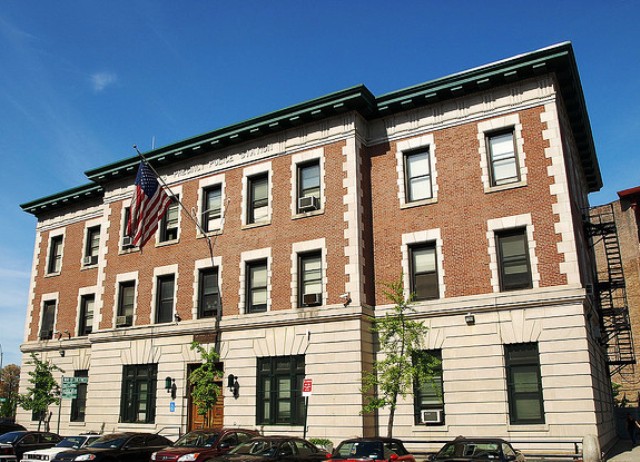
Born at the station house sometime around 1910, Pete was the pride of the precinct. He was named after Lieutenant Peter Brady, who adopted him when he was born.
Like many cats, Pete was very stubborn, and he had strong likes and dislikes. His favorite resting place was the top of the station house desk, but when a lieutenant whom Pete disliked was on duty, nothing could persuade him to stay near the desk. If he didn’t like the lieutenant on duty, he sought out a far corner of the station or made mischief.
One time the lieutenant went to the back room for a few minutes, leaving Pete in charge of the station. Pete obviously did not like this man, and he demonstrated his feelings by spilling a bottle of ink all over the police blotter.
Pete liked several of the lieutenants, including Frank O’Rourke, who would blow his police whistle to summon Pete back to the station. Another favorite was Lt. Charles Price. But Pete was most loyal to Lt. Peter Brady.
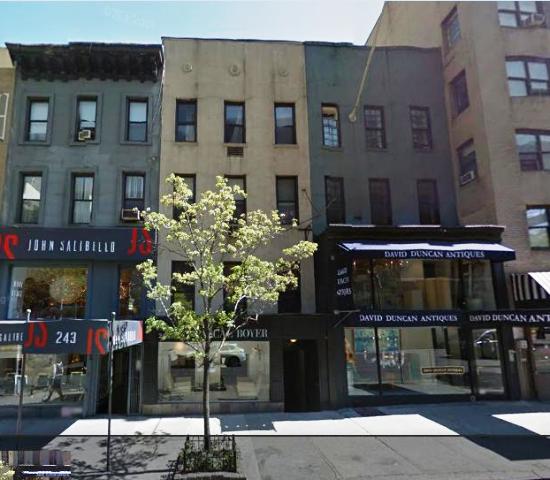
So in July 1911, when Lt. Brady and Lt. Price were transferred to other stations, Pete went on a hunger strike. For days, he refused to come out of his hiding spot in the basement. The policemen tried coaxing him with cream, milk, and fish, all to no avail. They finally captured the cat and sent him to the Queensboro Bridge Squad (Bridge Precinct D) so he could be reunited with his namesake.
1915: Tabby Gets a Gift from Justice
In 1922, the granite Beaux-Arts Bronx Borough Courthouse on Brook Avenue at 161st Street was home to a flock of English starlings. The birds discovered the building soon after it was completed in 1914, and were particularly fond of “Lady Justice,” who presided over the entrance on the Brook Avenue side of the courthouse.

During an extreme cold spell in January 1922, a woman found several of the starlings on the pavement – they had fallen from the statue, stiff from the cold. She took three of the birds to her home to revive them, and she brought three more to the police station.
I don’t know what happened to the three birds she took home, but I do know that the birds she took to the police were dead on arrival. Lieutenant John Lake summoned chief mouse catcher Tammy, who gladly received the free avian gift (I’m sure she would have preferred a porterhouse steak.)



